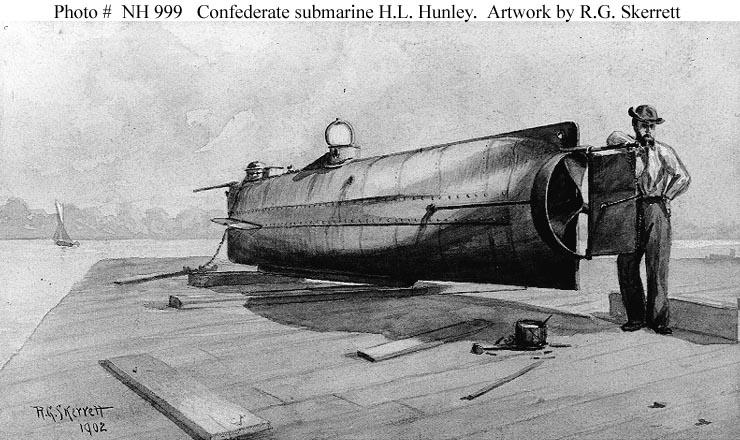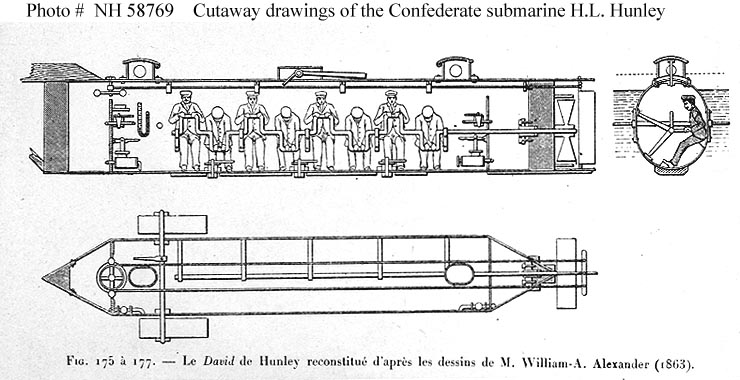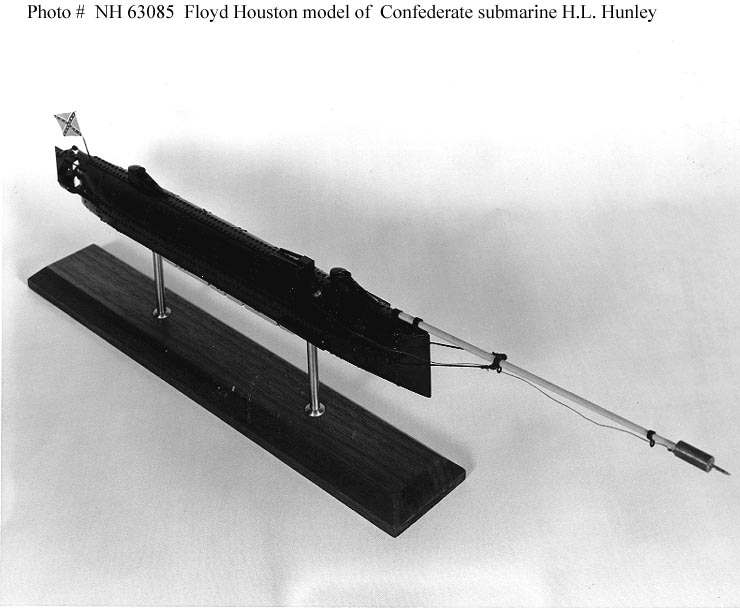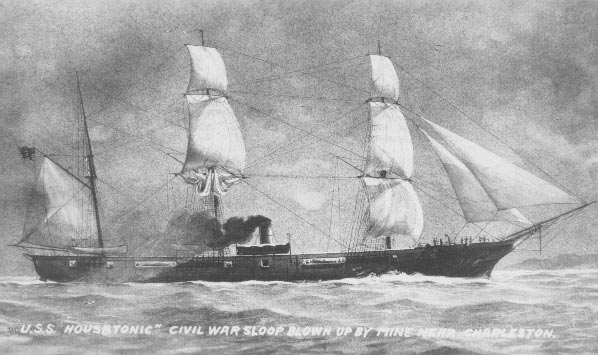Added 1 new A* page:Here's a photo I took of the pencil stage of today's page:

And for the sake of comparison, one of the finished ink version:

~~~~~~~
I came across a slideshow of Confederate submarine H. L. Hunley, "the first clear view of the sub since it sank in 1864 off the South Carolina coast." A submarine in the Civil War? Why yes, in fact the Hunley was the first submarine to sink an enemy vessel, and the Wikipedia article certainly makes for some interesting reading. In its day, the Hunley looked something like this 1902 sepia wash done after a contemporary painting:

image by U.S. Naval Historical Center (source)
and was powered by its crew, like so:

image by U.S. Naval Historical Center (source)
If that looks a bit unsafe, it was: the Hunley sank three times, killing 21 out of 24 of her three eight-man crew members. The first sinking came as the ship prepared for a test dive in the summer of 1863, "when Lieutenant Payne accidentally stepped on the lever controlling the sub's diving planes while the boat was running. This caused Hunley to dive with her hatches still open, flooding the submarine"; the tragically accident-prone Payne and two other crew members escaped the sinking. And that was only a couple weeks after the Confederate army had seized the submarine from her civilian owners, after seeing it in a successful test run against a coal flatboat; the Confederacy never official conscripted the vessel, so it didn't get a "CSS" prefix.
The "H. L." that remained at the front of the ship's name, then, came from the first and middle name of its inventor, Horace Lawson Hunley--who unfortunately was a member of the crew lost in the Hunley's second sinking six weeks later, when it failed to resurface after a mock attack. At the time, the submarine attacked its prey by spearing their hull with a barbed keg of black powder mounted on a 22-foot spar projecting off the prow, as represented on this modern miniature model:

image by U.S. Naval Historical Center (source)
The sub would embed the keg in the enemy's hull, then back away, with a 150-foot rope attached to the keg pulling taught to trigger its detonation. After the accident that killed Hunley, the supervising Confederate general decreed that the Hunley would only attack while surfaced, so the spar was adjusted to angle downward and strike the enemy vessel below the waterline as the Hunley cruised along the surface, and it was in this configuration, four months later, in which it made its only attack against a live target: the USS Housatonic, a 205-foot steam-powered Union sloop-of-war engaged in blockading Charleston's harbor:

image by US Military (source)
The Hunley succeed in attaching its barb to the Housatonic, which duly detonated and sank. The Hunley, however, failed to return to port. Theories vary on what caused it to go down: one has a pistol shot from the Housatonic striking the detonator box on the Hunley as they fought the waves in making their getaway, causing a premature detonation when the Hunley was only 100 feet away from the keg, rather than the designated 150; but the submarine's pump had not been engaged, nor did it show evidence of explosive damage, so another, perhaps more likely theory has it that the crew simply ran out of air in the sealed vessel.
The wreck wasn't found until the 1970's, and was only raised in 2000; in the year prior, there was a TV movie about it, The Hunley, starring Armand Assante and Donald Sutherland--as Confederate and Union officers, respectively, to judge by the movie poster. I have not seen this production!
|
